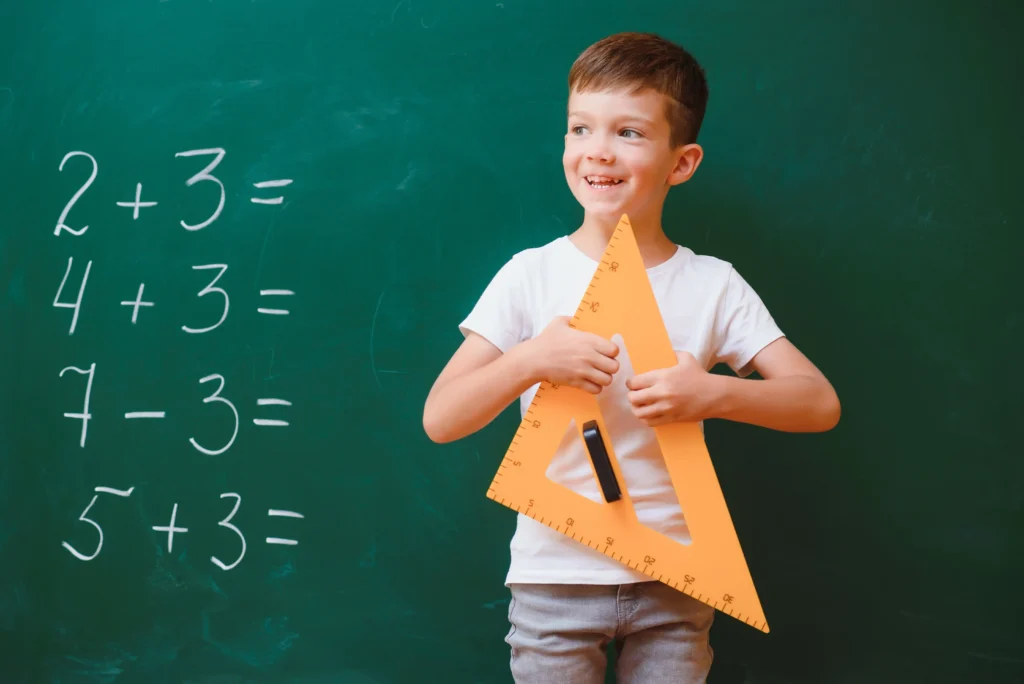3nd Grade Math
3rd grade math is an exciting stage where children begin to see how numbers connect to the world around them. Students learn to add and subtract larger numbers, explore multiplication and division, and understand fractions in simple, practical ways. This level also introduces concepts like measuring length, telling time, and reading simple graphs. Through problem-solving, students begin to reason logically and explain their mathematical thinking more clearly.
3rd grade math goes beyond basic operations and helps students think critically about patterns and relationships. At this level, math becomes a bridge between simple calculation and analytical thinking. Lessons often focus on multi-step word problems, data interpretation, and understanding geometric shapes and their properties. Interactive exercises such as math games, story problems, and collaborative projects make learning more engaging.
3rd Grade Math Worksheets
3rd grade math worksheets are essential learning tools that help children strengthen their understanding of key mathematical concepts through structured practice. At this stage, students are expected to master multiplication and division facts, explore fractions, and apply problem-solving strategies. Well-designed worksheets encourage critical thinking and help children transition from simple arithmetic to more advanced reasoning. These materials often include visual aids, puzzles, and story-based problems that keep learners engaged while reinforcing important skills. Teachers use them not just for homework but also in classroom centers and group challenges, allowing students to collaborate and build mathematical confidence.
A good 3rd grade math worksheet collection covers a wide range of topics, each reinforcing different areas of learning.
- Addition and subtraction with regrouping to improve number fluency.
- Multiplication tables and division facts for foundational skill-building.
- Fractions and equivalent fractions to develop rational number understanding.
- Geometry basics, such as recognizing shapes and measuring perimeter.
- Word problems that connect math to real-life contexts.
By incorporating these activities into daily study routines, students gain a stronger grasp of mathematical reasoning. Worksheets also allow parents and teachers to track progress, identify problem areas, and celebrate small victories that boost motivation and persistence.

3rd Grade Math Problems
3rd grade math problems encourage students to think logically and apply what they’ve learned to new and unfamiliar situations. These problems often include multiple steps, requiring learners to read carefully, analyze given information, and decide which operation to use. For instance, a question might involve adding and then dividing, which strengthens comprehension of the relationship between different arithmetic skills.
In many classrooms, 3rd grade math problems are introduced through stories or real-life examples, shopping at a store, measuring ingredients for a recipe, or planning a school event. This approach helps children see how math is used in daily life and gives them context for abstract numbers.
Students also learn the value of perseverance through 3rd grade math problems. They develop patience, accuracy, and critical reasoning as they verify their solutions. Peer discussion often plays an important role, as sharing strategies allows learners to compare thought processes and discover new approaches.
3rd Grade Math Book
A 3rd grade math book serves as a roadmap that connects all the mathematical skills students need in a single, cohesive structure. It introduces concepts progressively—starting with place value and simple operations, then advancing to fractions, measurement, and data interpretation. The chapters are designed to build upon each other, allowing students to revisit earlier topics while applying them in new ways. A well-organized textbook also includes colorful visuals, interactive exercises, and review sections that make learning more dynamic and less intimidating.
Within a typical 3rd grade math book, you’ll find structured learning units that follow a clear pattern:
- Introduction of a concept with visual examples.
- Guided practice that models problem-solving steps.
- Independent exercises for reinforcement.
- Real-world application sections that connect math to daily experiences.
- Review tests and quizzes to evaluate understanding.
This systematic layout supports different learning paces and provides a sense of accomplishment as students progress through each chapter.
Beyond its function as a classroom tool, the 3rd grade math book helps parents participate in their child’s education. With clear explanations and examples, it allows adults to assist with homework more effectively. Many modern editions now include digital versions and QR-linked videos, transforming traditional learning into an interactive experience. When used consistently, these books become powerful instruments for developing lifelong mathematical literacy and curiosity.
